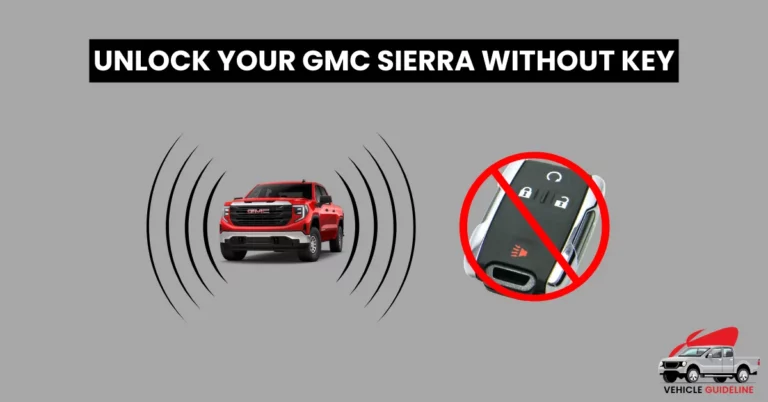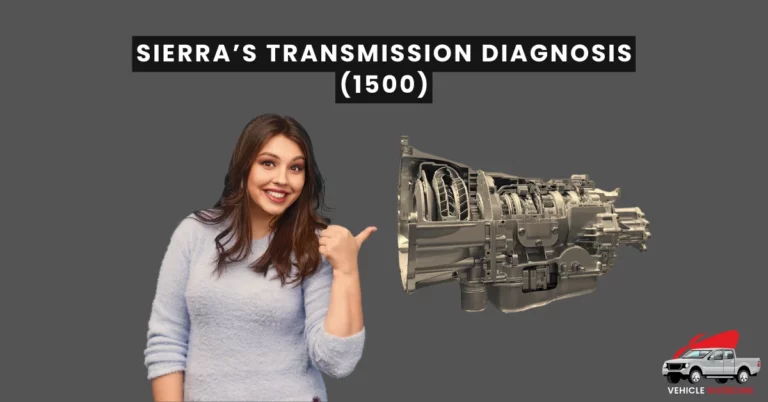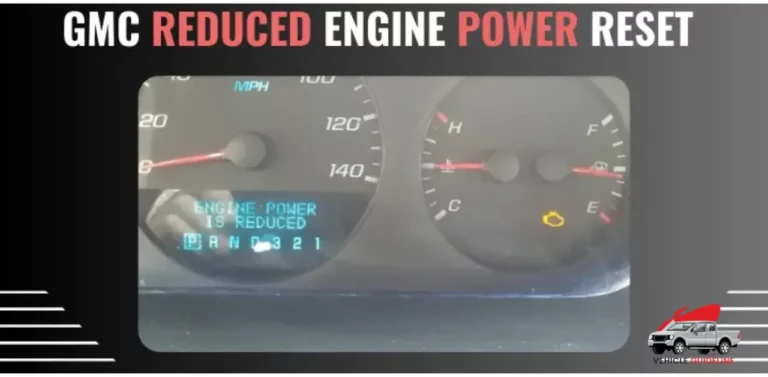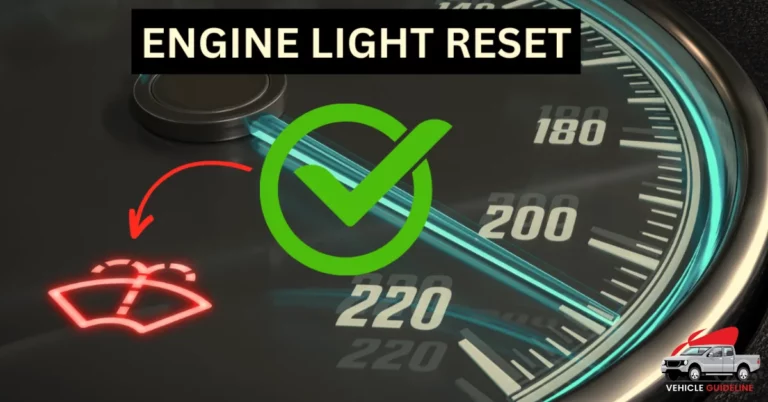6 Major GMC Sierra 4 Wheel Drive Problems You Must Know
Are you a proud owner of the GMC Sierra and rely heavily on its 4-wheel drive capabilities? Well, buckle up because we’re about to delve into some major GMC Sierra 4 Wheel Drive Problems that you absolutely need to be aware of. While this dependable truck is renowned for its rugged performance and off-road prowess, it’s not immune to issues that can leave you stranded or compromise your driving experience. From transfer case failures to faulty actuator motors, the most common problems plaguing the GMC Sierra’s 4-wheel drive system and insights on how to prevent or address them effectively. So, if you want to stay ahead of potentially costly repairs and keep your Sierra running smoothly in any terrain, read on!
6 Major GMC Sierra 4 Wheel Drive Problems and Solutions

The GMC Sierra, known for its impressive performance and rugged capabilities, is a truck that demands attention on and off the road. Like any other vehicle, it is not immune to mechanical issues, especially when it comes to its 4-wheel drive system. The 6 major GMC Sierra 4-wheel drive problems that owners may encounter and effective solutions to ensure a smooth ride every time. Whether you are an avid adventurer or simply rely on your truck for daily commuting, understanding these common issues and their remedies will undoubtedly save you time, money, and unnecessary headaches in the long run.
1. Transfer Case Failure

GMC Sierra owners know all too well the frustration of transfer case failure in their 4-wheel drive system. A faulty transfer case can leave you stranded in challenging terrain or rob your vehicle of its off-road capabilities. This issue is not exclusive to GMC Sierra trucks, as other 4-wheel drive vehicles can also experience similar problems.
Proper lubrication and regular fluid changes are key to preventing transfer case failure due to wear and tear or degraded fluid.
GMC Sierra owners should regularly maintain their 4-wheel drive systems and consult experienced mechanics to prevent transfer case failures.
Solution
Transfer case failure is common in GMC Sierra 4×4 models. Solutions include:
- Replacing it with a newer, more robust model or opting for a rebuilt transfer case rebuilt transfer cases are cost-effective and undergo a reconditioning process for optimal performance.
- Buying from reputable suppliers with warranty options provides added financial protection.
- Promptly address the issue to prevent further damage.
- Consult with professionals specializing in transmission repairs for expert advice.
2. Fuel Pump Failure

This common issue can leave you stranded on the side of the road and cause significant inconvenience. The fuel pump is responsible for delivering fuel from the tank to the engine, ensuring proper combustion and smooth running of your vehicle. When it fails, It can result in a range of problems such as engine stalling, reduced power, or even complete engine shutdown.
One interesting aspect of fuel pump failure in GMC Sierra trucks is that it often goes unnoticed until it becomes a major issue. Many drivers may experience intermittent problems such as difficulty starting the engine or hesitation during acceleration. They might attribute these issues to other factors like a weak battery or faulty spark plugs only to realize later that their fuel pump was at fault all along. It’s crucial not to overlook these early warning signs and address them promptly before they escalate into more severe problems.
Solution
GMC Sierra 4 Wheel Drive owners may experience fuel pump failure.
- Regularly maintain fuel system by cleaning and inspecting for wear or damage.
- Replace the fuel filter regularly to prevent debris from clogging the fuel pump.
- Use high-quality fuel additives to keep the fuel system clean and prevent corrosion.
- Retrofit an electric external inline fuel pump for higher pressure capabilities.
- Effective solutions are available to restore the vehicle’s performance and reliability.
- Take action today to avoid being slowed down by a faulty fuel pump.
3. Front Differential Actuator Failure
When it comes to off-roading or navigating rough terrain, having a reliable four-wheel drive system is crucial. The GMC Sierra has long been known for its impressive capabilities, but sometimes even the best vehicles can experience issues.
The front differential actuator plays a vital role in engaging and disengaging the four-wheel drive system in the GMC Sierra. When this actuator fails, it can result in several issues, such as difficulty shifting into a four-wheel drive or getting stuck in one mode permanently. This not only limits the vehicle’s off-road capabilities but also poses a safety risk if you suddenly find yourself needing four-wheel-drive traction.
Solution
- Replacing with aftermarket parts or performing regular maintenance.
- Aftermarket actuators can be more cost-effective than OEM parts.
- Choose a reputable brand and read customer reviews before purchasing.
- Regular maintenance includes cleaning and lubricating the actuator.
- Preventative maintenance can extend the lifespan and avoid costly repairs.
- Explore all available solutions before making a decision.
- Promptly addressing the issue ensures the smooth and efficient operation of the 4-wheel drive system.
4. Transfer Case Position Sensor Selector Switch Failure

The transfer case position sensor selector switch plays a crucial role in the proper functioning of a GMC Sierra’s 4-wheel drive system. When this switch fails, it can lead to various issues that affect the vehicle’s ability to shift between different drive modes. One common symptom is an inability to engage or disengage 4-wheel drive, which can be frustrating for drivers who rely on their trucks for off-road adventures or navigating harsh terrain.
A failed transfer case position sensor selector switch can also cause more serious problems. It may result in unintended engagement of 4-wheel drive while driving at higher speeds or on smooth surfaces. This sudden change in drivetrain configuration could potentially damage the vehicle’s driveline components and compromise safety on the road.
Solution
GMC Sierra can have transfer case position sensor selector switch failure, affecting the 4-wheel drive system. Solutions include:
- Replacing the faulty switch, cleaning it, or upgrading to an aftermarket switch.
- Regular maintenance and inspection of the 4-wheel drive system can prevent major issues.
5. Fuel Level Sensor Failure
Fuel level sensor failure is a common issue that many GMC Sierra 4-wheel drive owners face. This problem occurs when the sensor responsible for measuring the amount of fuel in the tank malfunctions or gives incorrect readings. It may seem like a minor inconvenience at first, but its implications can be far-reaching. One of the most significant consequences of fuel level sensor failure is inaccurate fuel readings on your dashboard. This means that you may not have an accurate idea of how much fuel is left in your tank, leading to potential inconveniences and even unexpected breakdowns. Continued use without fixing this problem can lead to further damage to your vehicle’s engine and other critical components.
Fuel level sensor failure is a widespread issue among GMC Sierra 4-wheel drive owners that should not be taken lightly. The inaccuracies caused by this problem can lead to unexpected breakdowns and potentially harm your vehicle’s engine if left unresolved. Therefore, it is crucial to address this issue promptly by having your fuel level sensor checked and replaced if needed.
Solution
The common issue with fuel level sensor failure in Sierra 4 Wheel Drive. Sensor failure leads to inaccurate readings or complete malfunction of the fuel gauge
- Replacing with OEM parts, using aftermarket sensors, or attempting a DIY fix.
- Several viable solutions are available to rectify fuel level sensor failure in GMC Sierra 4 Wheel Drive.
6. Heating and Air Conditioning Malfunction
Heating and air conditioning malfunctions can be a real headache, especially when they occur in the GMC Sierra 4 Wheel Drive system. Common issue is the failure of the heater to blow hot air or the air conditioner to cool down the cabin. This problem can stem from a variety of causes, including a faulty thermostat, clogged vents, or even a malfunctioning compressor. Regardless of the specific cause, it is essential to address this issue promptly to ensure comfort while driving.
The GMC Sierra 4 Wheel Drive system may have inconsistent temperature control. Some drivers may experience hot air blasting out suddenly on full blast while others might feel frigid gusts unexpectedly cooling their cabin. This erratic behavior can disrupt concentration and lead to inefficient climate control. Expert technicians recommend regular maintenance checks for early detection and prompt resolution of such issues before they escalate into larger problems.
Solution
GMC Sierra 4 Wheel Drive owners may encounter a faulty blower motor in their heating and air conditioning system:
- Troubleshoot by checking the fuse and wiring harness for any issues.
- If everything is in working order, replace the blower motor.
- A malfunctioning thermostat can also cause issues with temperature control.
- Check if the thermostat is properly calibrated and recalibrate if necessary.
- If recalibrating doesn’t solve the problem, replace the thermostat.
- Consider upgrading to a modern thermostat with programmable settings for added convenience and energy efficiency.
Are 4WD GMC Sierras Reliable?
When it comes to trucks, reliability is a top concern for any potential buyer. One popular option in the truck market is the 4WD GMC Sierra. But are these trucks really reliable?
It’s important to note that, GMC Sierras have a reputation for being dependable and long-lasting vehicles. There have been some complaints regarding the 4WD system. Some owners have reported issues with engaging or disengaging the 4WD mode, while others have experienced problems with the electronic controls.
That being said, it’s crucial to keep in mind that not all GMC Sierras will experience these problems. The vast majority of owners have had no issues at all with their trucks’ 4WD systems and continue to enjoy smooth operations on various terrains. It’s always wise to research specific model years and read reviews from other owners before making your purchase decision.
While there might be isolated cases of 4WD-related problems with GMC Sierras, this should not overshadow their overall reliability rating. These trucks are widely regarded as capable and durable vehicles that can tackle any challenge thrown their way – regardless of road conditions or weather elements. As with any vehicle purchase, proper maintenance and regular inspections will go a long way in ensuring your GMC Sierra stays reliable for years to come. Reviews are also more important to justify the reliability of the vehicle.

Final Thoughts
The GMC Sierra has experienced several 4 wheel drive problems that have affected its performance and reliability. From issues with the transfer case to faulty sensors and electrical malfunctions, these problems have caused frustration and inconvenience for many owners. While GMC has attempted to address these issues through recalls and repairs, it is clear that more needs to be done to ensure the long-term functionality of the 4 wheel drive system in the Sierra.
As a consumer, it is important to stay informed about any potential problems or recalls related to your vehicle and take appropriate action if necessary. By holding GMC accountable for these problems and demanding reliable and efficient 4 wheel drive systems, we can work towards a better driving experience for all Sierra owners.
Owners of the GMC Sierra 4WD can solve problems by maintaining and servicing the system. Promptly address warning signs and seek professional help if problems persist. Proper care ensures a reliable 4WD system.
FAQs
What would cause 4WD to stop working?
A 4WD system can stop working due to mechanical issues, electrical problems, actuator failures, fluid leaks, vacuum trouble, sensor failures, software glitches, tire issues, improper use, lack of maintenance, obstructions, and age and wear. When this happens, it is recommended to consult a mechanic for diagnosis and repairs.
How does GMC Sierra Auto 4×4 work?
The GMC Sierra’s Auto 4×4 system engages 4WD when it detects a need for increased traction. It monitors various factors and engages 4WD automatically when necessary, improving traction and stability. The 4WD system automatically switches between 2WD and 4WD without the driver needing to do anything. The system is designed for everyday driving conditions. It improves driving safety and convenience, but manual 4WD mode might be needed for extreme off-road situations. The importance of having knowledge and confidence to handle any type of terrain. You must have to explore the working of GMC Sierra’s 4WD.
Why does my GMC Sierra say service 4 wheel drive?
The Service 4 Wheel Drive message on a GMC Sierra indicates an issue with the four-wheel drive system. Possible causes include a faulty transfer case control module or a worn-out actuator motor. Promptly addressing the issue with a qualified mechanic is crucial to prevent further damage and ensure safety
Do GMC Sierras have 4 wheel drive?
Many GMC Sierra models have optional four-wheel drive (4WD) systems for improved traction and stability. Availability varies by model. The message Service 4 Wheel Drive on your GMC Sierra dashboard doesn’t necessarily indicate a major problem. It could be a minor issue like a loose connection or sensor fault. If you experience other symptoms like unusual noises or decreased traction, it’s advisable to have it checked. Regular maintenance can prevent small problems from becoming bigger ones.


![How to Reset Service Stabilitrak Light GMC Sierra [Easy DIY Method]](https://vehicleguideline.com/wp-content/uploads/2023/08/Model-Years-to-Choose-32-768x402.webp)




